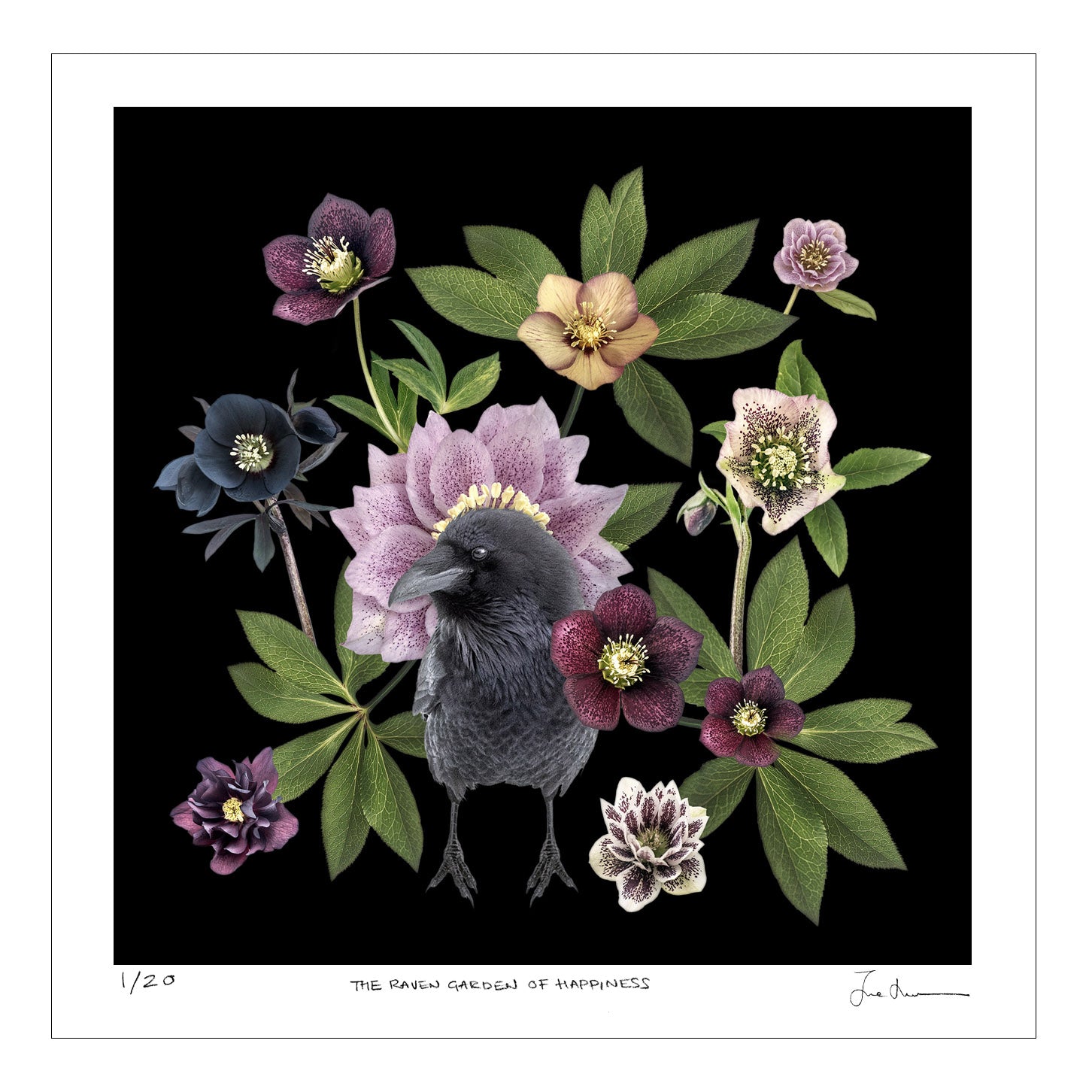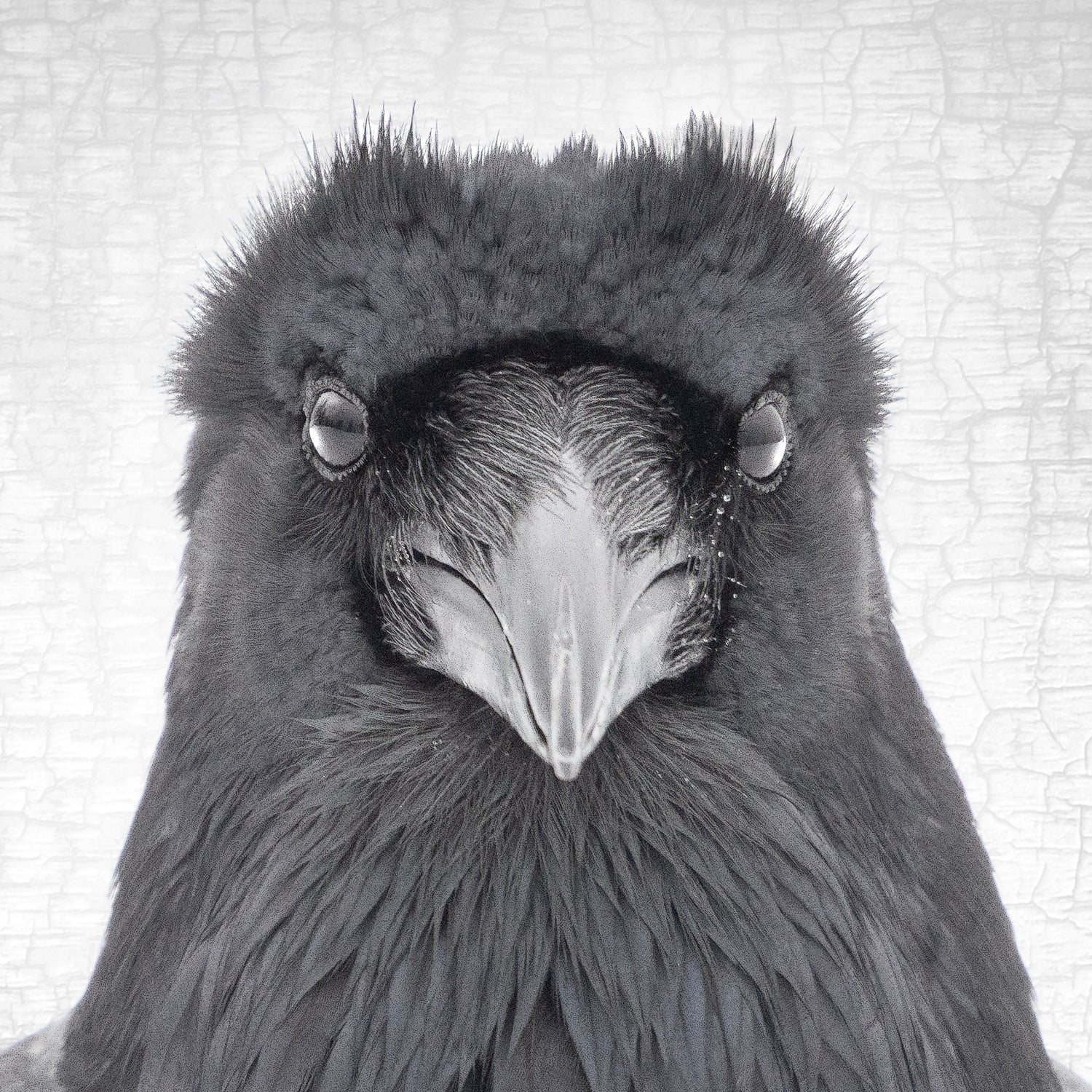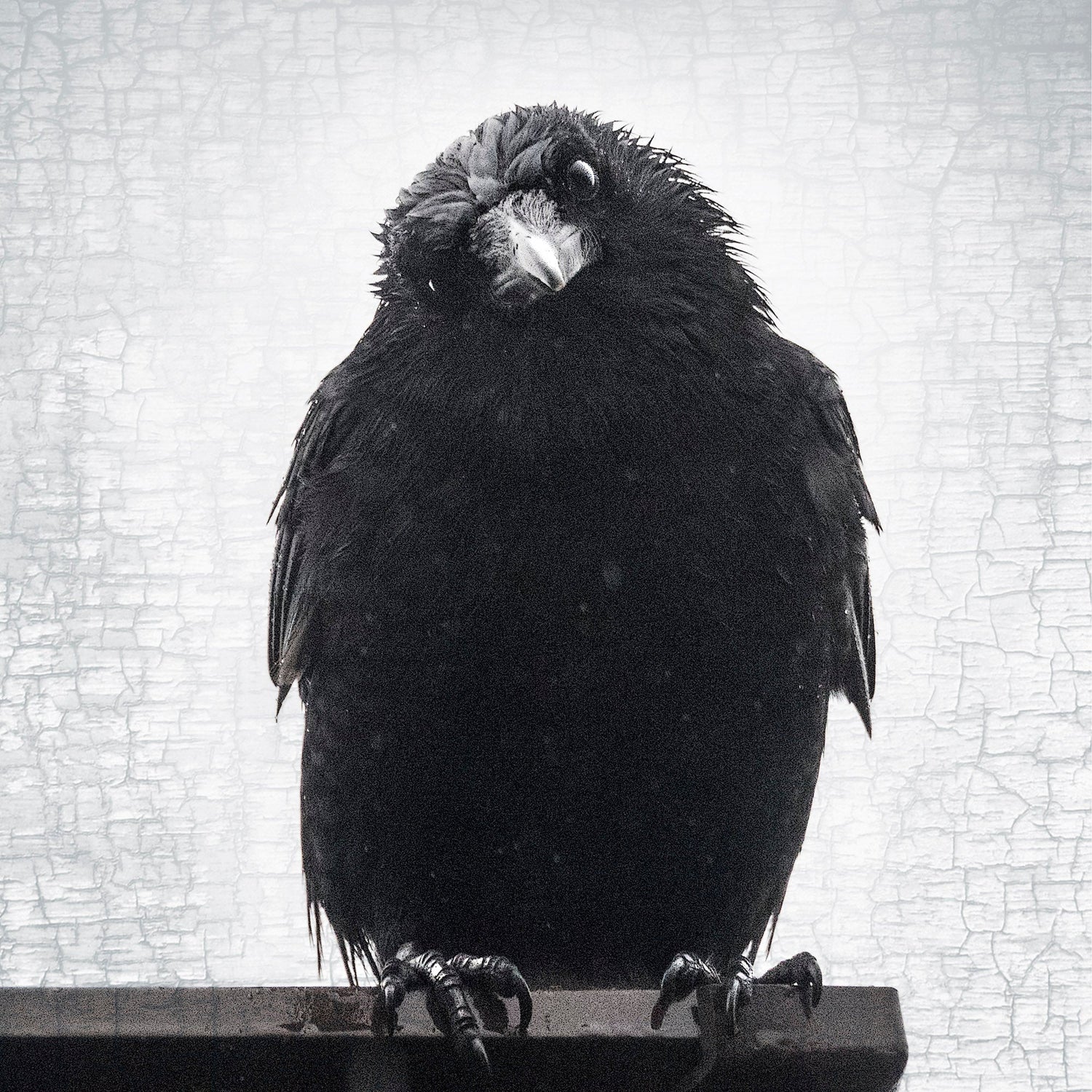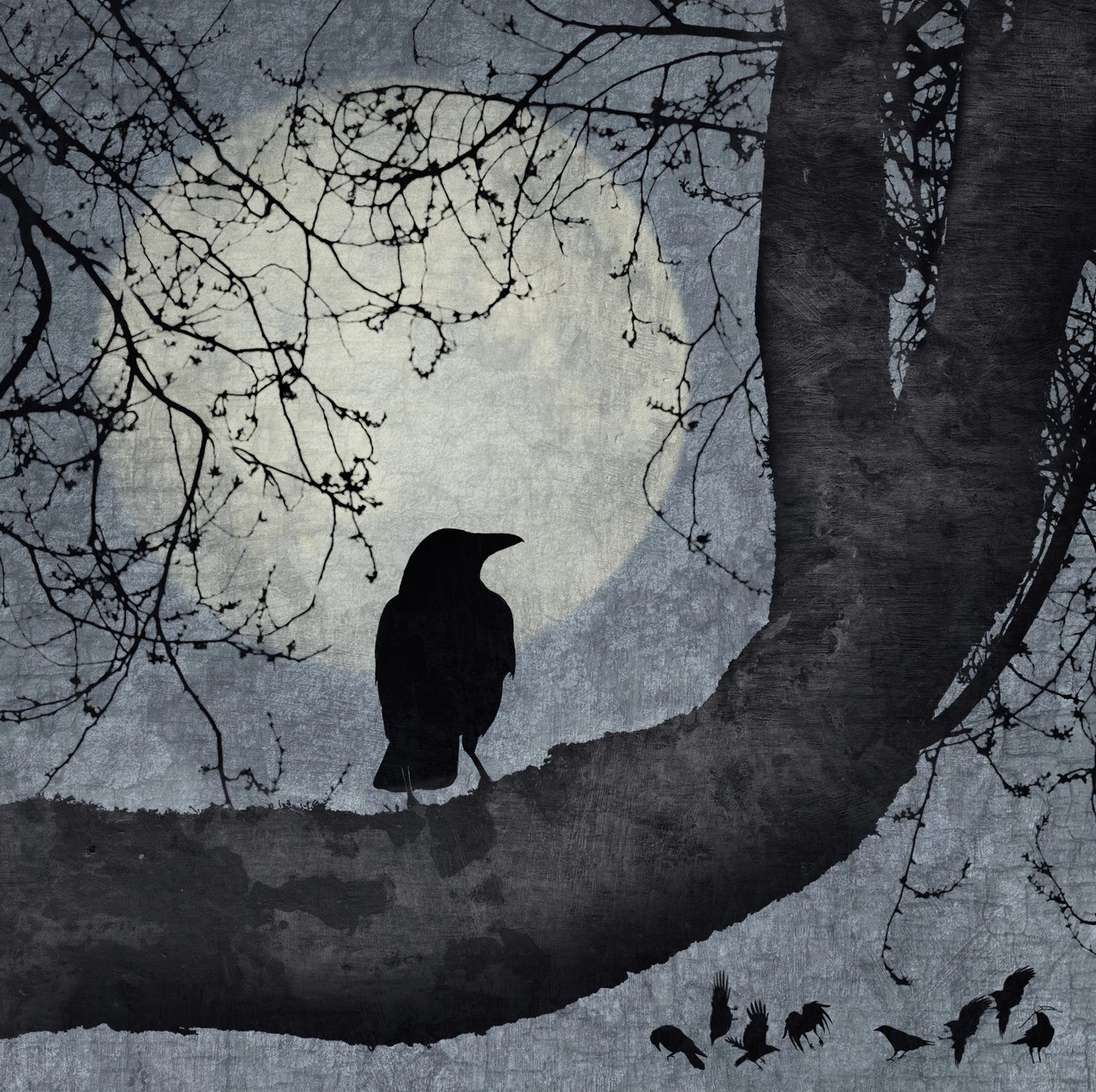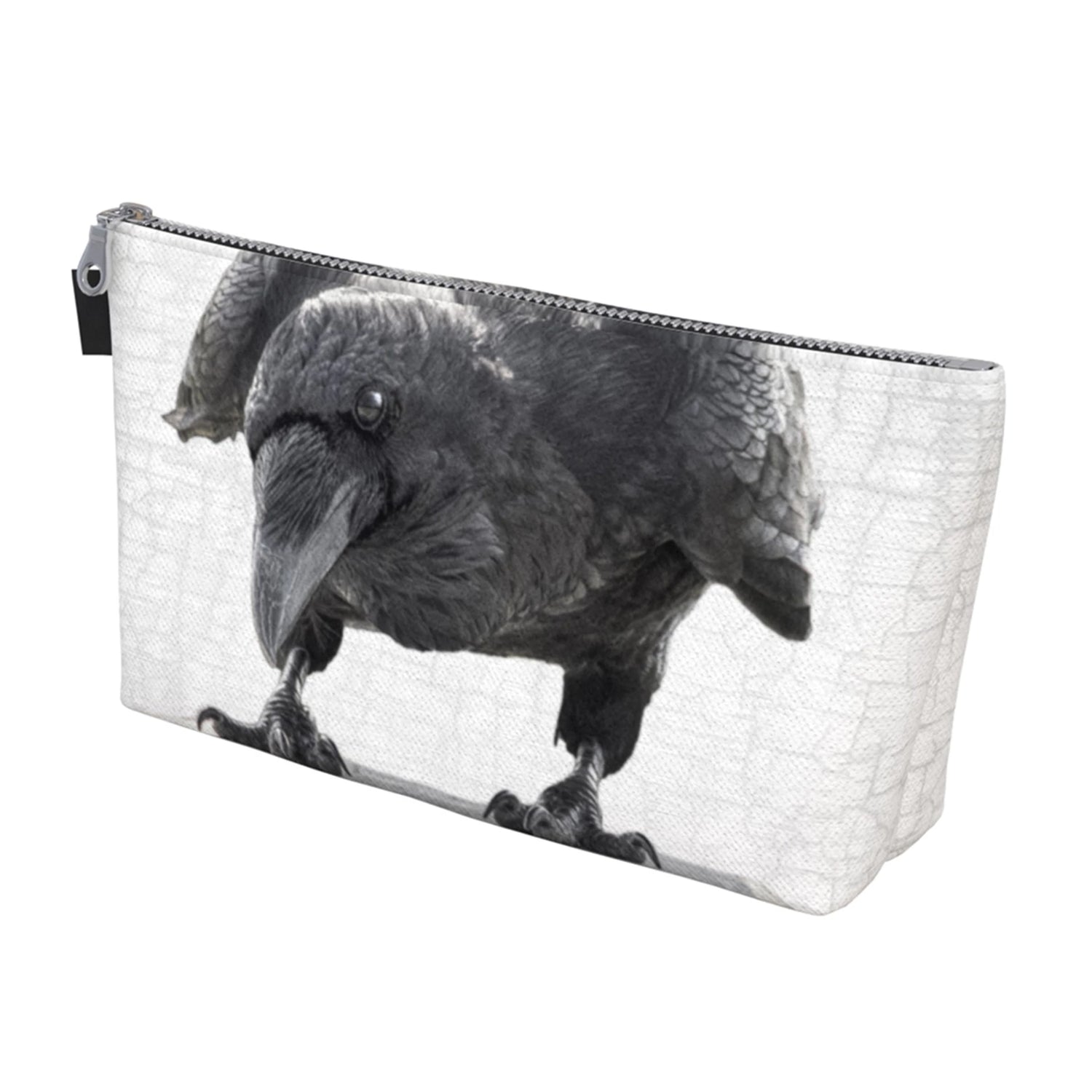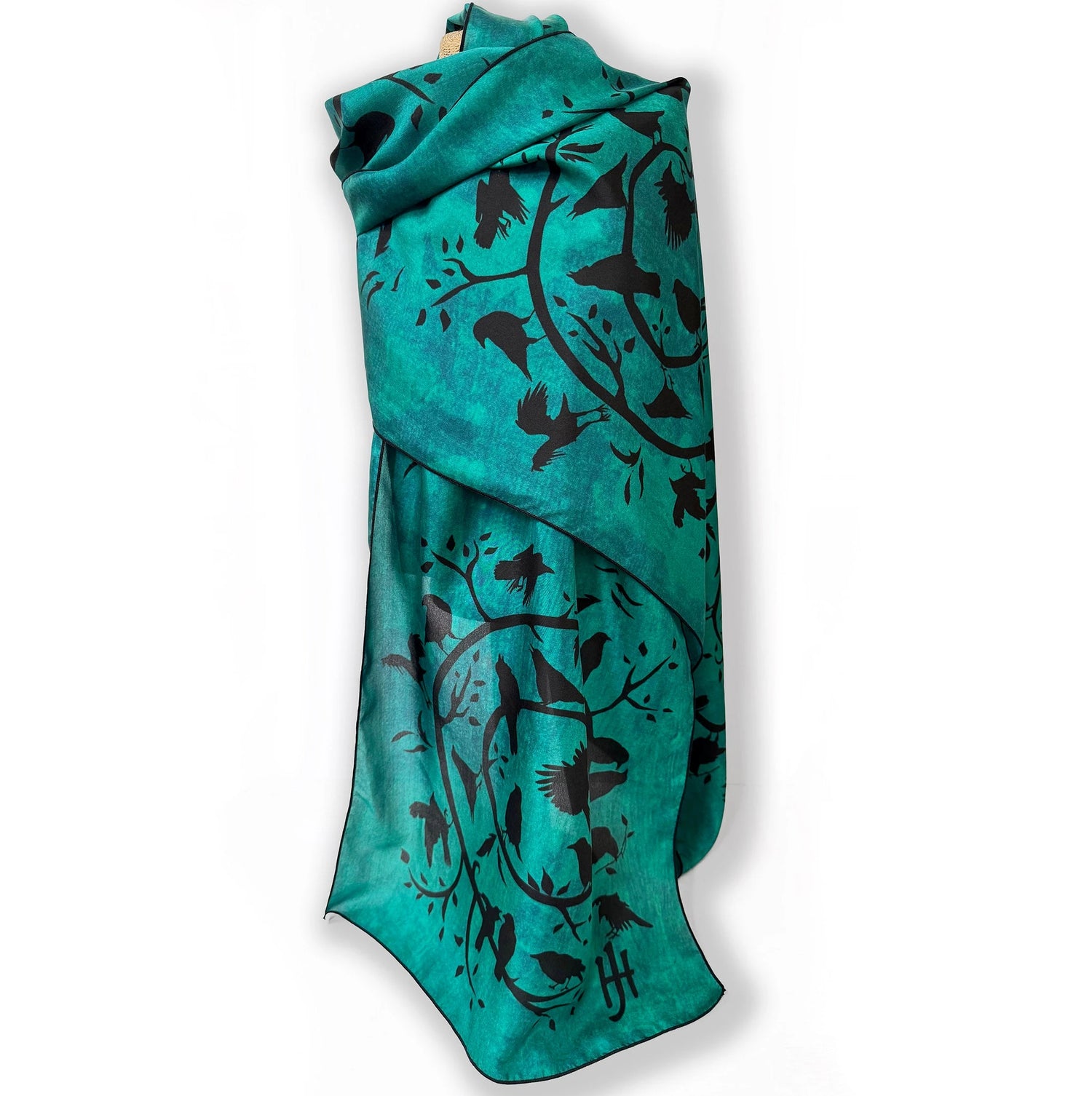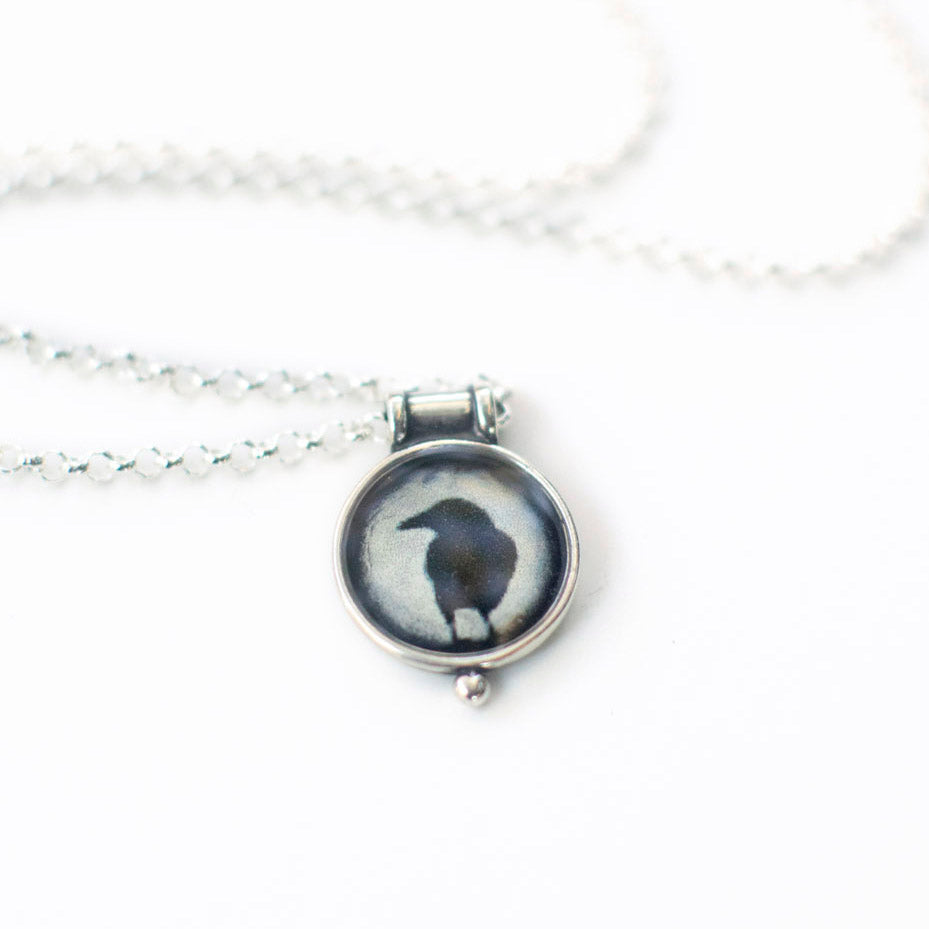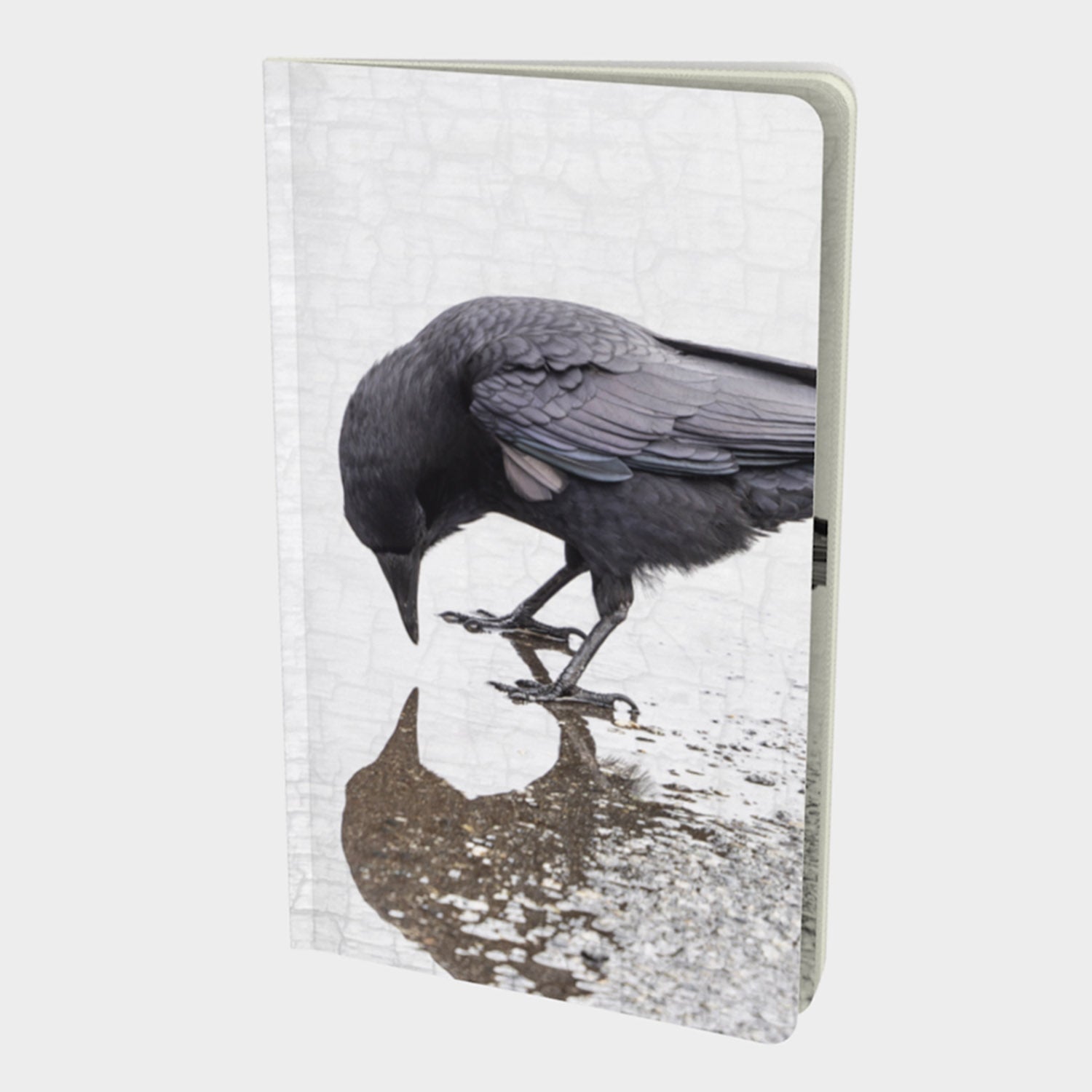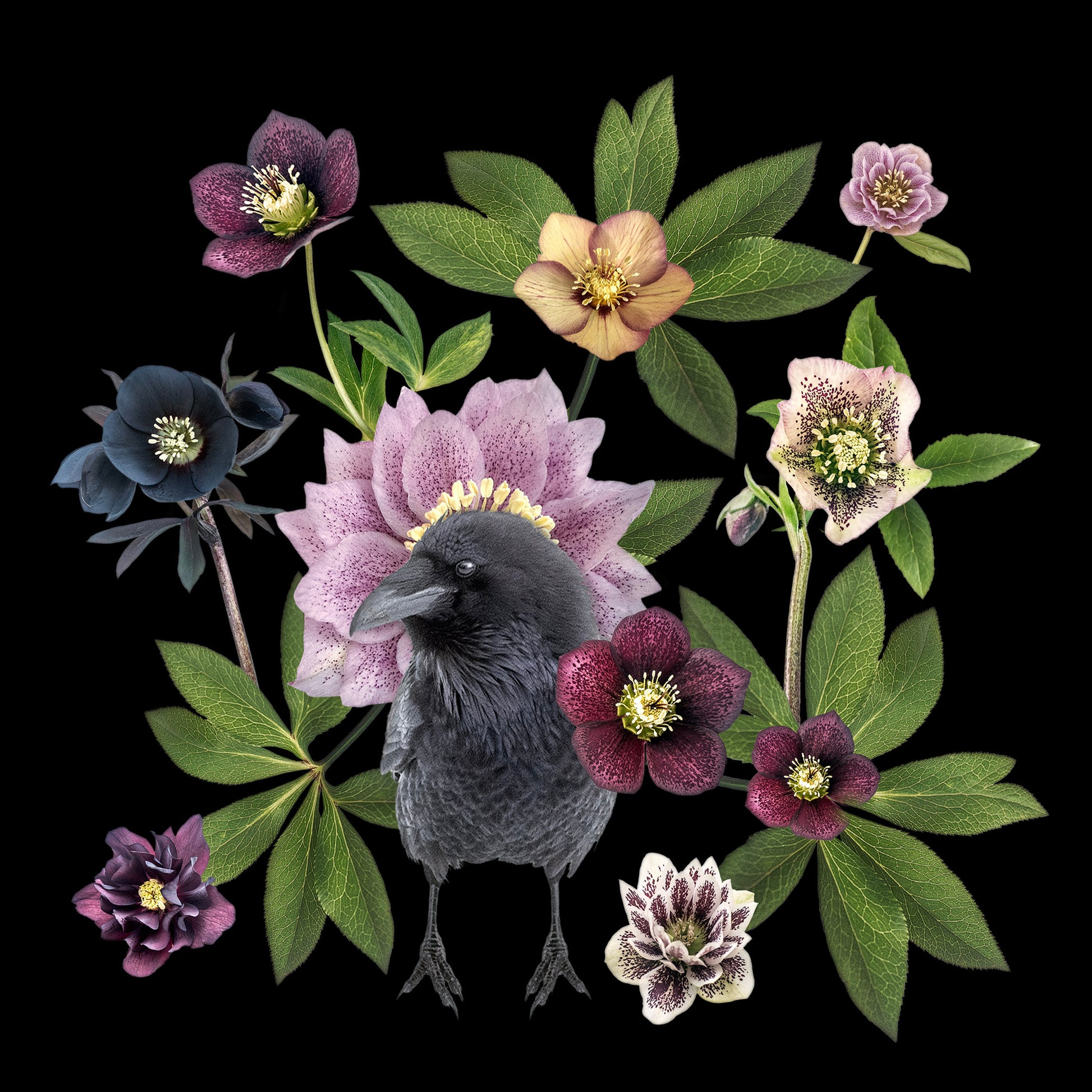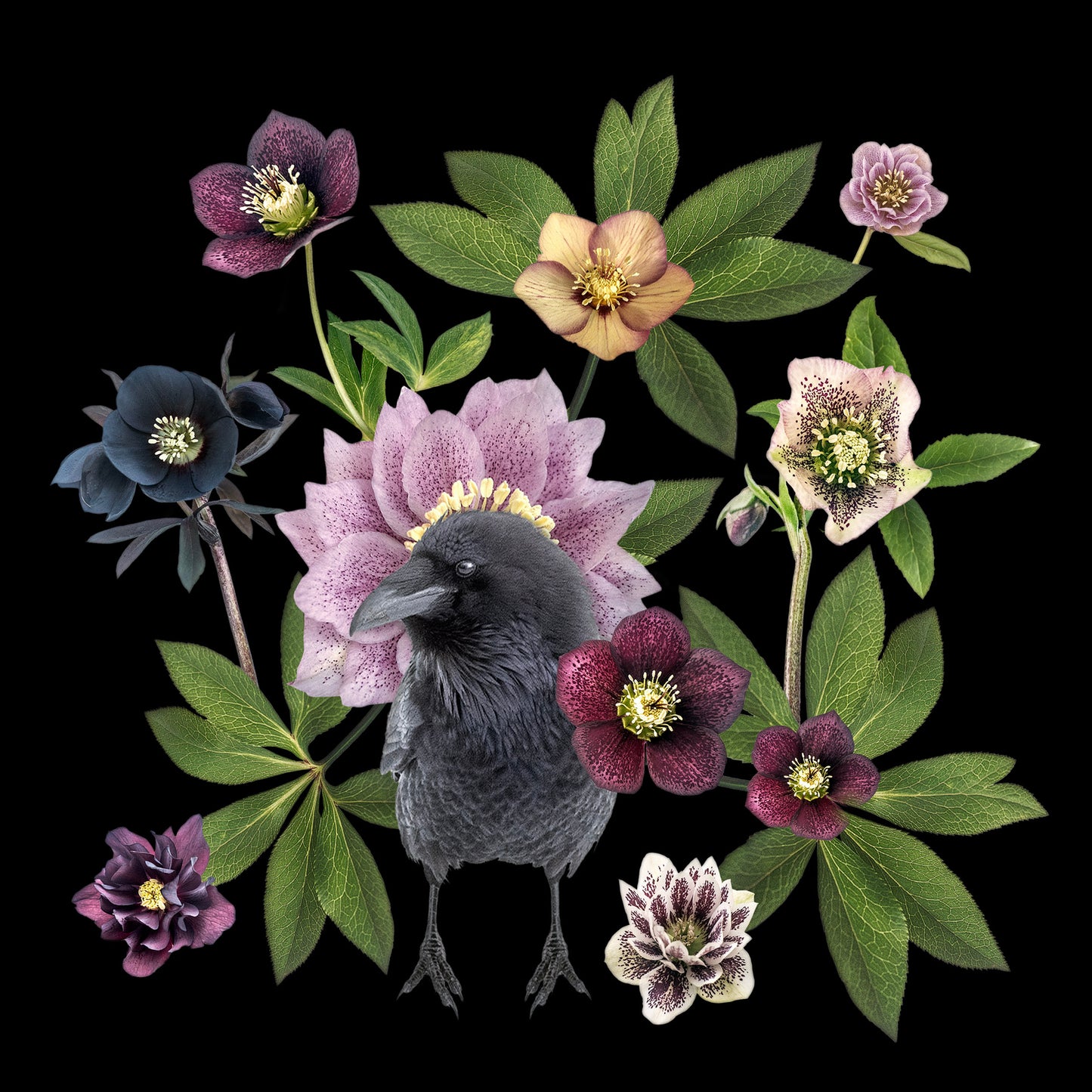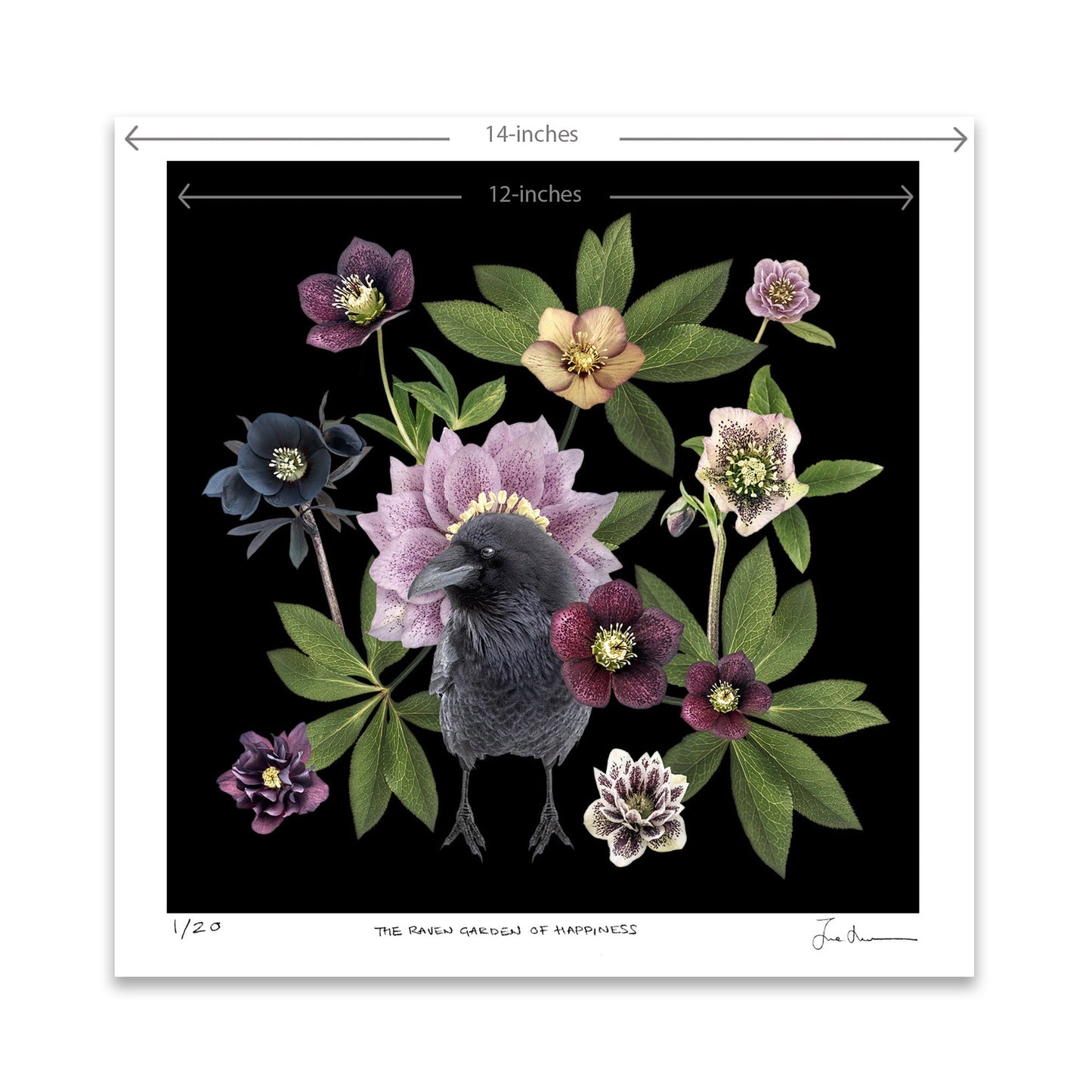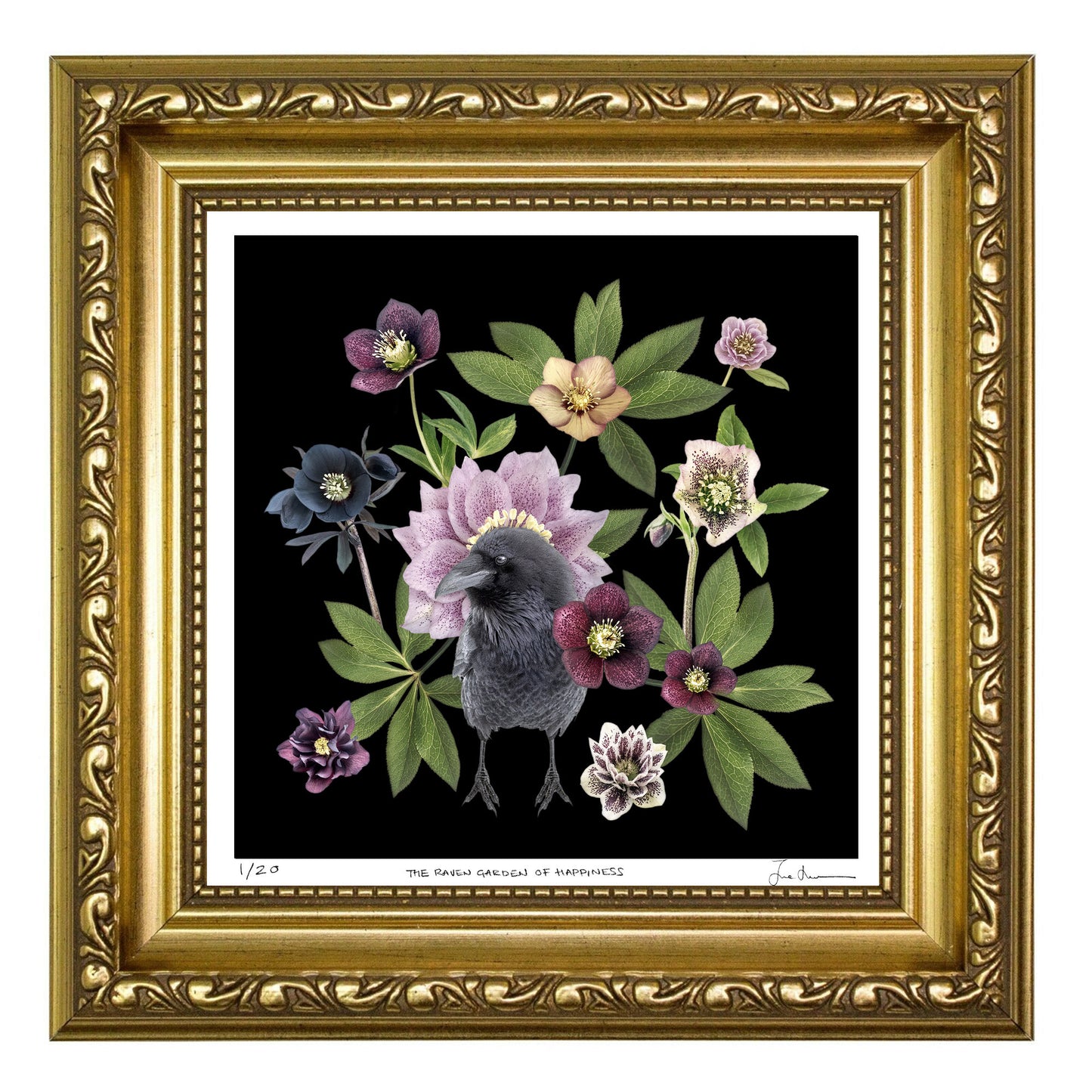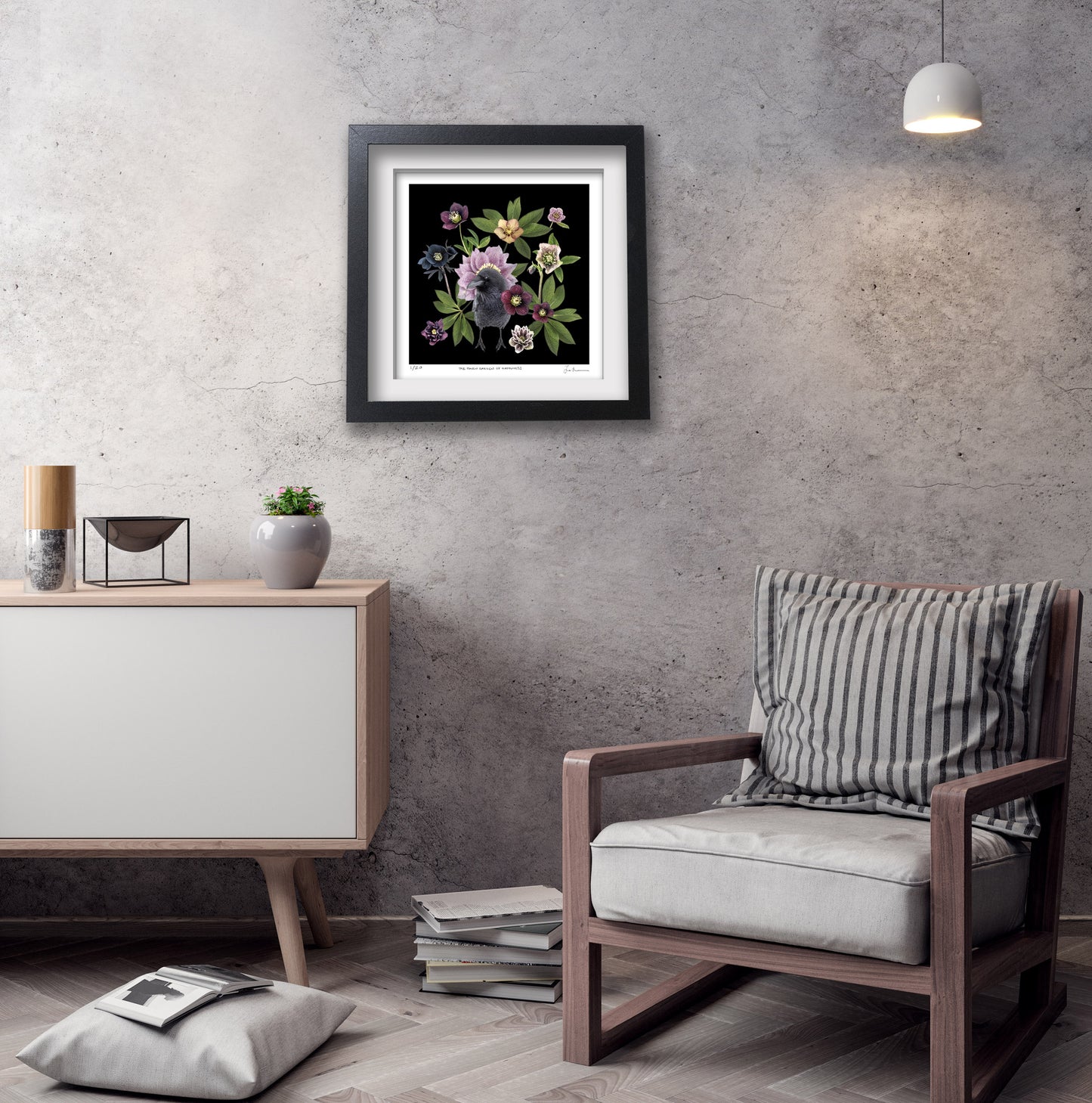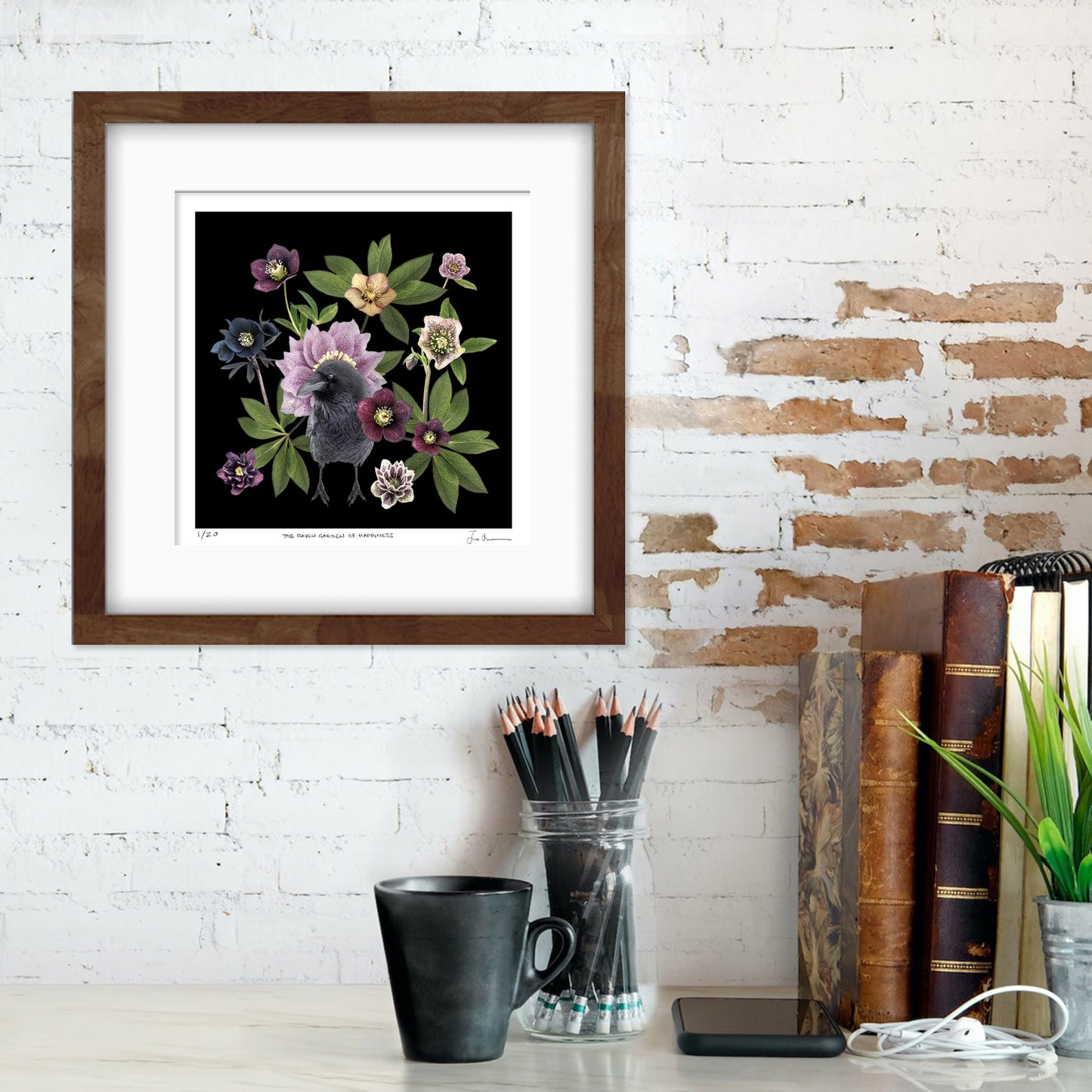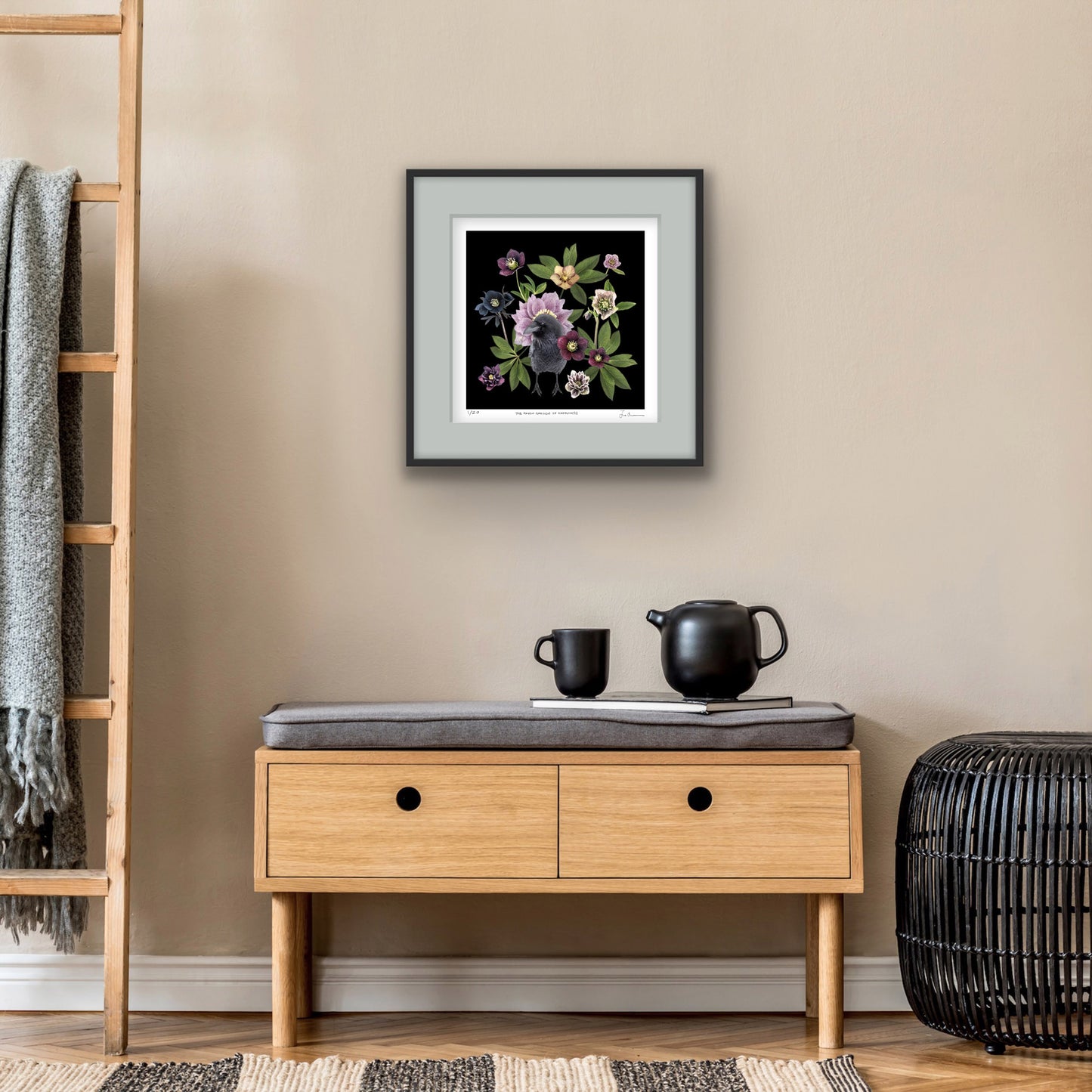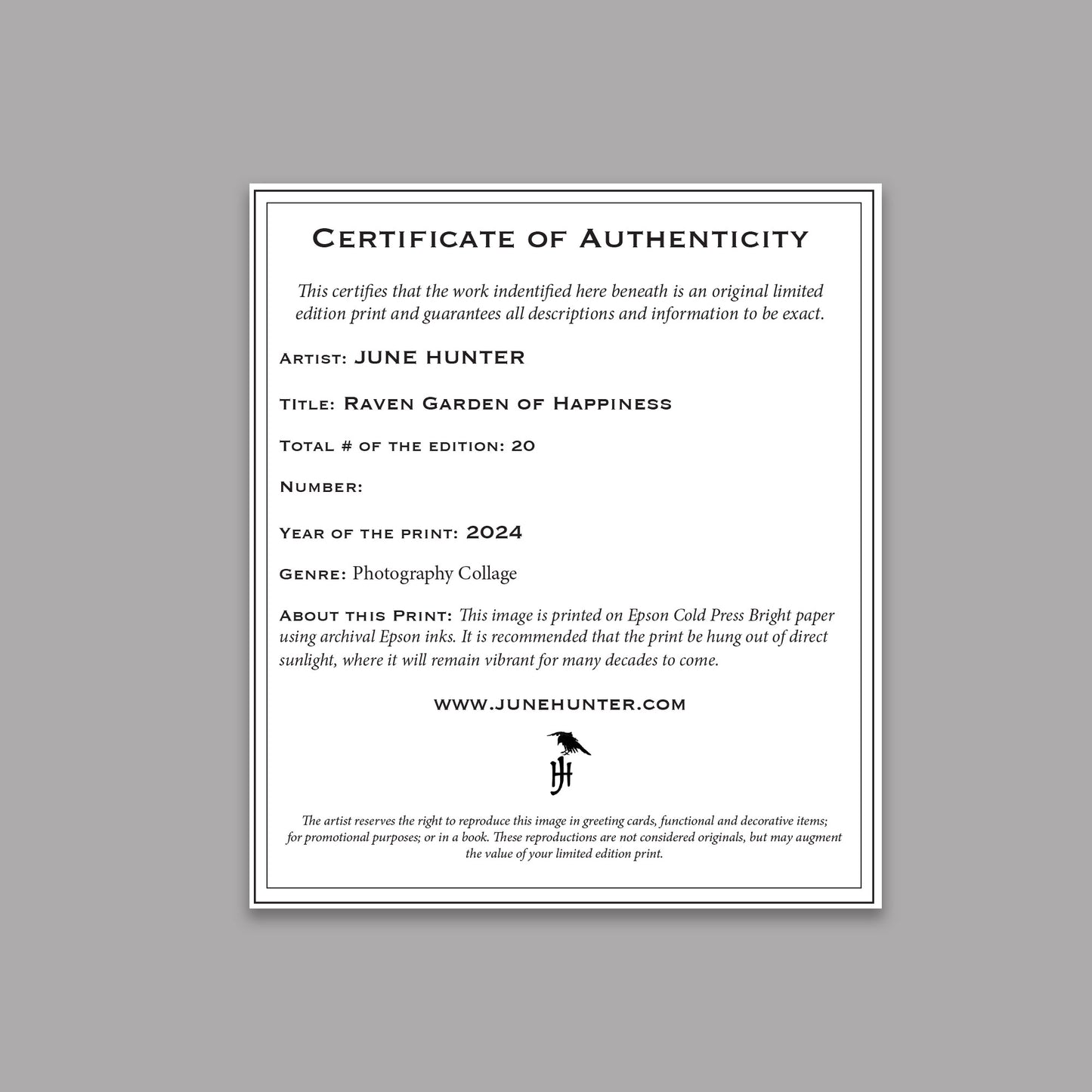How to Make Friends with Crows: A Step-by-Step Guide to Befriending Crows
An Interview with June Hunter about Befriending Crows
June Hunter is a crow and raven photographer who has been making friends with crows for over 20 years. You can follow her urban crow stories on the Urban Nature Enthusiast blog. For more on how to befriend a crow, keep reading! Or listen to the interview in full.
How to Befriend Crows
Tips from a Crow and Raven Photographer
Crows are amazing creatures so it's understandable that you might want to befriend a local crow. Listen to this entire interview with June Hunter, a Vancouver-based crow and raven photographer who has befriended many crows over the past fifteen years. Or read the full transcript of the interview at the bottom of this article. If you're a corvid lover, check out June's Raven Portraits and Crow Characters.
First Do No Harm
The number one rule of befriending crows is to first do no harm.
You shouldn't go so far as to make a crow reliant on you. Nor should you capture crows and make them live with you. You wouldn't like it if a crow did that to you, so make sure you treat crows with respect and don't intrude excessively on their lives as urban (or country) animals.
Remember that crows are wild animals and should be treated as such. Even your neighbourhood crows are wild.
Do Crows Trust Humans?
Crows that live in urban environments trust humans more than rural crows. But they're still rather wary of people.
If you pay attention to a crow who you're trying to befriend, you'll see that they may be doing a risk-benefit analysis. Their eyes dart about as they try to decide whether you're a risky proposition or relatively safe.
If you're offering food, they may want to come closer. However, they're still calculating whether or not getting closer is a risk. It's unusual for a crow to actually eat out of a human being's hand. So don't expect that to happen when you're befriending a crow.
And if you're trying to photograph crows and get close enough to take a portrait, it may be a matter of months before you manage to take a decent photo. As soon as you pull up your camera to squeeze off a shot, they'll have scattered. So have patience in this befriending process.

How to Make Friends with a Crow: Step by Step
Step 1. Find out their food preferences
Most crows are omnivores and scavengers.
A safe bet is to feed a crow shelled peanuts. They seem to like this. But you don't want to feed crows bread because it fills them up but doesn't contain proper nutrients.
Moreover, you shouldn't feed crows excessively. They shouldn't become reliant upon you to get food, otherwise they won't look for food themselves. This could be a serious problem should you decide to move along or forget to feed them.
Crows are wild animals and should not become reliant on humans for their survival.
Step 2. Find a crow's territory
To befriend a crow, you need to know that you're hanging out with the same crow or crow family each time.
Crows are territorial, so you generally just need to figure out where they live, and then focus your attention on the crows in that specific zone.
For example, in urban areas, a single crow family might "own" a half a block zone of real estate. If you pay attention, you'll be able to figure out which tree or roof they live in, and go from there.
In addition, it helps to pay attention to see if they have any distinguishing characteristics such as a bad eye, bent leg, funny wing or white feather, or particular way of acting that's unusual.
Step 3. Offer them protein-based treats
Again, the first rule of befriending crows applies: first do no harm.
Don't feed them excessively. But in order to befriend a crow, you will probably need to offer gifts. Offer a gift, and then stand back so they can take advantage of what you're giving. You may even have to drop your gift and wander off. After about 20 paces, you can turn around to see if they've taken up your offering.
It's best not to feed crows junk food even though they might enjoy these treats. Junk food is just as bad for crows as it is for humans.
If you give a crow the odd chip or Cheezie, there will be no ill effects. But don't make this a regular habit. In other words, don't give crows their absolute favourite treats daily. Instead, give them a protein-based treat that's healthy.

Step 4. Establish a visiting schedule
This may be hard to do and is not strictly required.
But if you do go visit a crow at the same time every day, this will likely be helpful in terms of building trust. Crows do recognize humans faces, so over time they will gain trust with you and begin to get closer. Soon enough, you'll have made your first crow friend!
Step 5. Add a bird bath
Crows need water, and they like to dip their food in water.
But if you don't have a large backyard, this may create a mess that you don't want to deal with. Sometimes it's better to just put out a small bowl of water, so your yard doesn't turn into a Turkish bath for crows. Generally speaking, you'll want to make your receptacle something that's easy to clean.
Step 6. Be patient
Crows won't become your friends overnight.
It would seem that they're not so different from humans in that respect. So take your time and be patient. It will likely take months for you to become friends with wild crows.
Like most wild animals, they don't just instantly trust humans—with good reason. But urban crows tend to be more trusting than rural crows. Local crows in your area, haven't had their family members shot out of a tree, so they don't have any major reason to be excessively distrusting.
Step 7. Keep your distance
One of the main tasks adult crows have is caring for their baby crows.
This is a seasonal occurrence, but it does take up quite a large portion of their year. You shouldn't be getting up in a crow's personal space when they're caring for their kids. In addition, it's best not to try and befriend a baby crow as they need to learn how to survive on their own.
Not sure if the crow is a baby? Read this article that's all about baby crows. >>>
Does The Location of the Food Make a Difference in Befriending a Crow?
When offering a food gift, you'll want to place it so that the crow can actually get at it and eat it.
Don't try to put it too close to you because then they simply won't take the gift.
Some people like to place peanuts in tricky locations where the crows have to perform some special feat of avian gymnastics to get it. In this way, the crows are still working to get their food and are not becoming too reliant on easy food.
That said, you should only be giving crows small offerings that are more like treats not main meals. Your neighbourhood crows already have sources of food that they need to continue relying upon. And you don't want their food-sourcing skills to get rusty!

Does Establishing a Feeding Schedule Make You Friends with Crows?
You should never establish a "feeding" routine because you shouldn't be giving your new crow friends so much food that it is their main source of food.
The word feeding seems to imply that you're providing an entire meal. You may like to establish a visiting routine where you gift a few small treats each time. However, don't deliver a steak and kidney pie to your crow friends every afternoon. That's a recipe for disaster. If you bring too much food, it will attract other crows and result in territorial disputes. You also want to avoid attracting other creatures such as rats or raccoons.
What Do Crows Like to Eat?
Crows will eat almost anything that humans eat though they're not particularly interested in vegetables.
Don't expect to make friends with a crow by giving them tidbits from your salad.
They are happy to eat roasted unsalted peanuts. They are omnivores, and like both protein and carb snacks. However, it's best to only provide protein snacks as human carbs may not actually be the best food for crows. In addition, simple carbs like bread or crackers can fill up a crow without providing any nutrition, which is not good for their health.
Foods that Crows Love
Many crow scientists agree that crows go absolutely crazy over Cheezies.
That said, giving crows Cheezies isn't a great idea since it's a relatively unhealthy food for any animal, including humans. If you give your favourite crow a couple Cheezies once or twice a year, that shouldn't do any harm. But don't feed them Cheezies every day!
Crows eat almost anything. If you provide a healthy protein treat, they will most likely be pleased.
Will "Other Crows" Be a Problem?
When you're trying to befriend a crow or a crow family, you could accidentally create a problem with other crows.
How? By putting out a large dump of food and causing a crow fight.
Crows are territorial and if you do something too generous, it will draw other crows from other territories to your yard or the site of your food dump. This is bad news. Crows can become injured during a fight. They can lose an eye or damage their beak. They can get a bad leg or wing. You don't want to be responsible for an urban crow getting injured.

Common Questions about Befriending Crows
Is feeding crows a good idea?
It's okay to give urban crows a few treats in order to befriend them but don't dump huge quantities of food scraps in your yard. If you do that you'll attract crows from other territories and a crow fight is almost sure to occur. You will also attract unwanted visitors such as rats or even larger mammals like raccoons and coyotes — and you definitely don't want them to start associating humans with food.
How can I get a crow to trust me?
You can get a crow to trust you by visiting them regularly, speaking to them, giving them space, and providing treats. Be respectful. And get to know a crow just like you would a human. It takes time to befriend a crow!
Does a birdbath help in attracting crows?
Crows do love water, so a birdbath may help. But depending on where you live, that might not be enough.
Will keeping distance help you in befriending a crow?
Crows are not going to just leap into your lap and let you give them a chin scratch. So, yes, you do need to keep your distance when getting to know a crow. In fact, ravens tend to be less wary of humans and more likely to get close. Crows in general will not get more than a few feet from you, and only after you've gained their trust.
How do you attract a crow?
Rather than trying to attract a crow, you might consider going to where the crow family hangs out and providing a few treats on site. If you'd like a crow to come to your backyard, you can leave a few peanuts out on your balcony or in the backyard.
How do you interact with a crow?
When observing crows and befriending them, keep your distance, chat with them, and take your cues from their behaviour.
What do crows like to be given?
In a word: treats. Crows like to be given food treats.
Can you train crows to follow you?
You probably could train a crow to follow you, but this isn't a great idea. Crows shouldn't become reliant on humans.
Do crows like cat food?
Yes, crows will eat most foods that have a protein base.
Do crows like dog food?
Crows do like dog food. However, it's best to not feed crows dog food that's made from pesticide-treated soy products as that is going to most likely shorten their lifespan. Instead, if you're going to feed a crow dog food now and then, make sure it's premium dog food that's been made from meat not soy.
___
This article was written by Colette Nichol with additional stories from crow and raven photographer and nature enthusiast June Hunter. Our aim with these short articles is to bring interesting crow, raven and bird facts to more online readers while also highlighting June Hunter's bird photography and designs. To read June Hunter's popular blog the Urban Nature Enthusiast, where she shares stories about crows and ravens, please click HERE.
Are You a Corvid Lover?
View a gallery of beautiful urban crows and fine art crow imagery by June Hunter. If you'd like to add some feather finery to your home, check out June's many bird art collections.
Crow Art & Crow Landscapes
June Hunter is known for her crow photography and fine art prints. For more crow portraits, visit the Crow Characters Series. For moody landscapes featuring crow silhouettes and gorgeous blue textures, visit the Blue Crow Landscape Series.
Other Crow & Bird Articles
The Mystery of Crows with White Feathers
In the Midst of a Murder: Decoding the Fascinating Group Behaviour of Crows
Baby Crows: Everything You Need to Know about Corvid Fledglings
43 Unexpected Gifts for Bird Lovers and Bird Watchers
___
How to Befriend a Crow: An Interview with June Hunter
INTERVIEW TRANSCRIPT:
HOW TO GET STARTED WITH PEANUT DIPLOMACY
Colette:
How could one make friends with a crow? What steps would they need to take if they wanted to make friends with a crow?
June:
I've got a couple of blog posts about this under the title Peanut Diplomacy, which sort of gives you a clue, because just as we often say crows all look the same to us, I guess crows can tell people apart. But we're not really that interested if there's not something that sets us apart from their point of view.
Perhaps you've done something mean to them, which is bad, and then they will hate you forever. So if you're going to do something to make them love you forever, it would be to give them something that they want.
But at the same time, that's why I call it peanut diplomacy, because it's a delicate art, because it's sort of the overarching theme of do no harm. So you want to make friends with a crow, but then there are a lot of pitfalls.
So the key is to just give a few peanuts.
I'm talking like no more than half a dozen shelled unsalted peanuts, because if you go around just chucking peanuts indiscriminately, that leads to all kinds of problems, like you're attracting rats and other creatures, you're attracting huge crowds of crows, which your neighbours won't like.
And also you won't really be able to tell which crow is which because then you've just got a huge murder of crows on your lawn.
THE VIRAL CROW STORY & CROW GIFTS
There is this story that was super viral about maybe, probably 10 years ago. Do you remember the little girl who got all the gifts from crows?
John Marzluff, the crow writer, has said that crows have been known to bring gifts to humans who have been feeding them. So there was this story of this little girl in Seattle, and she had this huge treasure box of stuff that crows had brought her, allegedly, and this was shared widely.
I thought, Oh, isn't that lovely?
But then it turned out that her parents were letting her put sacks of food out in their suburban Seattle garden, and they were attracting rats, gulls, all kinds of things. That ended up being a huge neighbourhood dispute.
And then the other thing is I've talked to a crow scientist who lives here, and he says he's never had a crow bring him a gift.
I don't know if this is just wishful thinking, anyway, you shouldn't really be giving crow peanuts in order to get gifts back and certainly not giving them more treats to make them love you more kind of thing because that's not really how it works.
Basically, you're giving them a few peanuts to sort of open diplomatic relations.
Colette:
You mentioned you spoke to a crow scientist about this?
June:
Well, he asked me, he said, do crows ever bring you gifts? Because he's been studying crows for years. He's near retirement age, and he studied it in university, and he's never had, and nobody he knows has ever had, crows bring them gifts. I've never, in 15 years, had crows bring me gifts either.
I mean he's thinking, and I'm also thinking, that occasionally they might just accidentally drop something that they had picked up thinking it might be food. And then they see you've got peanuts, and they drop this useless bead or whatever it is they were carrying around or paperclip.
And then people think, oh, it's a gift. But people are very attached to this idea that crows will bring you gifts. So maybe it's true. So many people say it, maybe some crows do bring gifts.
But back to the key to making friends with a crow. First, you've got to identify that you're seeing the same crow all the time.
I have a little guide to this in my new calendar. In fact, this is instead of month 13, I've got the crow guide.
So there are three layers of figuring out who your crows are. The location, because generally they'll be on the same half block or so all the time. And then sometimes you can find a crow or one of the crow pair that has something physical that tells them apart ever so slightly if you watch them very closely that they might have a funny claw or a broken beak or a white feather or one squinty eye or something, or paint on their feathers, which is a temporary thing. Or behaviour—sometimes there's a crow that has a certain behavioural quirk like Bongo makes bonging noise, and Mr. Walker likes to walk beside the dog to the tree.
So sometimes it's sort of like a blueprint trying to layer them over to get a certainty identification.
But sometimes you only have the luxury of one layer. Sometimes you have two, sometimes temporarily one crow looks a little bit different, but then the paint that was on their feathers wears off. But by then you might've gotten to know their behaviour a little bit more.
So first of all, you've got to identify the crow, and then when you're giving them the few little peanuts, you want to try and do it in a way where you're not attracting a whole bunch of crows, and you're not making conflict.
It's quite difficult right now with the baby crows, because normally I walk around, I see the Bongos over here and I give them some peanuts, and then I see the Walkers and I give them some peanuts. But the Bongo's babies are flying now, so they're flying out of the Bongo territory because they don't know about crow territory yet.
And so the Bongos are getting close to the Walkers. So I have to sort of try and give the Walkers peanuts when the Bongos aren't too close because then I become mobile territory and that can cause them to be fights, which that is causing harm.
You don't want to be the cause of conflict.
CREATING CROW CONFLICT
I sometimes see people who like to ride through a neighbourhood on a bike or scooter, broadcasting peanuts in their wake for crows. And you see the crows all following them along. And I'm sure it feels like being like Cinderella, right?
But often the crows get into fights after that because they've all been lured out of their territorial boundaries and they're all excited about these peanut. So I would say that's not a good idea.
So just give small amounts, pick where you do it, try and make sure you're just making your diplomatic gesture towards the right crow.
Sometimes you make mistakes, you go, Oops, you're not Mr. Walker, you are Bongo and I didn't notice until it was too late.
CROW FOOD
I usually feed them unsalted shelled peanuts. They do like peanuts in shells partly because they look bigger and that gets them all excited, but then they do make a lot more mess. So I'm always trying to balance out how I can keep these little crow relationships going without causing problems amongst other crows and also problems with the neighbours.
Neighbours don't like their gutters filled with peanut shells. And they're getting the same nutrition out of the shelled ones. They also like high-quality cat or dog cable in small pieces. That's high protein. You'd never give them bread because bread will just fill them up. They will eat it because it looks yum, yum, yum. They'll eat it up, but it just fills them up so they feel full, but they haven't got any actual nutrition in them.
Colette:
And in terms of that high quality cat and dog, does it matter what kind? Are you looking for the meat-based kind or it doesn't matter because it's all protein based?
June:
Yeah, as long as it's protein. Yeah.
CROW ENVIRONMENT
Colette:
Does it matter if it's a quiet environment? Or is it mostly that you're just trying to make friends with a crow when there aren't a bunch of other crows around?
June:
Yeah, well, it's never quiet in the city really. I mean, there's constantly construction and things going on.
I do try and go out early in the morning if I can, when there's just fewer people and distractions around.
Another thing is putting water out for them when it's hot and dry all summer, just having a nice clean bowl of water that, it doesn't even have to be a fancy bird bath, just a little plastic bowl that you clean a few times a day to put out.
They will come and sometimes they'll bring their babies or dip food in it for their babies. When it was really dry before this last couple of weeks, there was nowhere for the adult crows to get any moisture for the babies. I know they bathing in the little bowl as well. So you're providing amenities.
Provide amenities—create a little crow spa.
I mean, sometimes I play games with them. I do little puzzles for them or put the peanuts in a little row on the picket fence. So they have to go up and down the picket fence to give them a little challenge. And I've heard some people hide the peanuts under something, so it makes them, give them a little game. Probably not when they're nesting. They probably don't appreciate the extra challenge then.
TALKING TO CROWS & CHOOSING YOUR SEASON
You could talk to them. I talk to them. Sometimes in the fall when it's kind of riotous and there are all these teenage crows, it's impossible to feed them in their territory because the new teenage crows who still don't really respect boundaries, they will follow you. And that's really the only time I've been bunked on the head with a crow is like a teenage crow in the fall.
They get so excited.
So in the fall for a couple months, I don't even give them peanuts and they still follow me because they remember I have peanuts, but I just talk to them instead and I'll literally say, How's your day going? How are those babies? You're looking very good today or generally in the fall, You're looking very terrible today because that's when they start losing their feathers. Oh, that looks miserable.
Colette:
If you were to feed them in the fall, are you saying that increases your chance of being dive bombed by an enthusiastic teenager?
June:
I find that yes, because of their sort of territorial rules. It's sort of a bit of a lawless period there until the teenager crows get the gist of things. And they quiet down in the winter. You can find, there'll be one group will follow you from their territory into the next territory, and then those crows in that territory say, Oh, so we're not doing territorial boundaries are we?
And then they'll follow you into the next one. So next thing you know, you have that situation where you've got a murder of crows following you around getting into fights.
I've now discovered that sort of after about the beginning of September until mid October or even late October, giving crows treats is just not such a good idea.
FEEDING SCHEDULES
Colette:
Do you find that having a feeding schedule helps where they're actually expecting you to come at a certain time in the morning?
June:
Yeah, I think so. I'm not very good at that, but yes, yes, I think they do. They're sort of waiting for you. But the thing is you don't want to give them so much food that they rely on you. They're waiting for you because that's just a little event in their day.
You don't want them to be waiting there because you're going to give them a steak and kidney pie and a fried egg on top. Because then they'll stop looking for food on their own, and it'll attract other crows from out of territory. Plus rats. But yes, I think a schedule is probably is good. I mean, we walk the dog three times a day, so I think the crows know when our dog walking time is.
BATHING BIRDS (AND RATS!)
Colette:
And you said that a bowl of water would be fine if you're really trying to optimize your crow friendships. But is adding a bird bath good?
June:
Oh yeah. Bird bath is fine. The only thing is that sometimes with a bird bath at certain times of the year the crows will really make a mess. When they've got babies, they do make a mess.
I had a little bowl out the front here, when it was really hot. I kept going out there and finding strange things. Twice I found half a rat in it, and chicken necks. I don't know where they found a chicken neck from. But they'll be dunking it.
So we have a bird bath in the back and it's sort of under some bushes and the crows don't normally go there. It's sort of under a canopy. So the little birds like that they can fly up in the canopy go there.
Sometimes the crows do go there, and I find bits of fish and weird stuff floating around, but not often. You have something that's easy to clean that you're not too attached to, or in addition to a bird that's good. And something that's easy to clean because obviously if you find a half a rat floating in it, you're going to have to clean it out and bleach it and rinse it.
PATIENCE and TRUST
Colette:
Do you think that you have to be quite patient to slowly but surely befriend a crow or are they going to just like you the first time?
June:
Well, it depends. It depends on the crow. First of all, in the city it's easier to befriend a crow because city crows associate people with food much more readily than country crows who associate people with getting shot because you're on the farmer's field. And then even in the city you might meet a crow that's already had peanuts from another person and is like, oh yeah, I know how this game works. Yeah, yeah. Or it could be a crow that's had a bad experience with people and they're going to take a lot longer to win over.
When I first started getting to know crows, I thought they're never going to let me take that picture because they would sort of let me get close-ish with the peanuts, but as soon as I got the camera out and they'd see the light on the lens, they'd be off.
But they gradually realized it wasn't some kind of blunderbuss or whatever they were worried about. The ones I know now seem to know that I usually give them a peanut after I've taken their photo. Sort of like a modeling fee as well as a diplomatic token.
TAKING YOUR TIME + CROWS’ RISK-BENEFIT ANALYSIS
Colette:
How long do you think it took for the crows that you know, to get comfortable with the camera where they wouldn't just fly off the first sight of it?
June:
Well, oh God, that was so long ago now. I'd say months really.
Colette:
So people who are getting to know a crow and are also potentially trying to take pictures of one should expect it to take a few months before they can actually get their first decent shot.
June:
I'd say yes, unless it's a crow that I've been taking pictures of for years, because then they probably will associate camera lenses with peanuts.
Colette:
So some people say keep your distance to get to know a crow, but that doesn't really seem to be the case.
June:
Well, I think you have to to begin with, you're not going to go and put your hand out and a crow's going to come. And in fact, I've never, never, even now, I don't have any crow that would come and take a peanut out of my hand, none of them get that close.
That's the thing, crows are constantly, if you look at a crow's face, you can see their eyes going and it's like their whole brain is involved in a complex risk benefit analysis all the time.
Like: This person, they may have a peanut, they may be dangerous, I could get a bit closer, but then something bad might happen.
And as they get to know you more, you sort of go higher up on the benefits side of their risk benefit calculations. You see what I mean? So I would say that maybe it's best just to see them, say hi, leave them some peanuts and then walk away and maybe look back when you're like 20 feet away and see if they're going to come.
They might still might not come until they see you go out of sight to begin with.
LOCATION…DOES IT MATTER?
Colette:
In terms of giving them the food, does the location of the food make a difference? Does it matter if you put it on the ground or on a branch or on your back patio, or is it more just you can't be crowding them?
June:
Probably somewhere where it's safer for them to get it.
I guess maybe on a fence or on your back deck.
Right now, on my back deck, I don't really, Marvin and Mavis, I've stopped feeding them in the spring because we had too many crows. There were two other Crow families and they were coming and fighting all the time. So I've given them a break.
But normally I would go out in the morning and put out some peanuts and Marvin and Mavis would just come and take them and sometimes I'd be out there and say hi to them and sometimes I would just put the peanuts there and go in and see them through the window or maybe not even see them at all.
But like I said, it became too combative and they were flying between the houses and somebody was going to fly into a window and making quite a ruckus in the morning. So they're on a hiatus, but I think if there's somewhere higher up and safe where they can see all around and make sure nobody's going to ambush them while they're getting the peanuts, that might be good.
FOR APARTMENT DWELLERS
Colette:
So would it be unwise for me, say living in a three-story walkup, to put a couple peanuts on the edge of my balcony railing, considering that that's actually relatively close to my house? Are they intelligent enough that they're not going to fly into my sliding glass doors?
June:
Well, the thing to consider is there's probably building rules where they tell you you can't because of-
Colette:
Hehe, I think that escapes the building rules. I think you're not allowed to have a pet, but it says nothing about feeding crows.
June:
The odd peanut. Yeah, well if you wanted to try it, I would try it and see what happened. But be prepared to stop doing it if you got a huge gang of them. I mean it also depends how much you like crows. If you want to have a crow staring at you through your patio window with a fixed gaze when it's five minutes past your usual time depends on your appetite for crow.
I've had so many stories from people over the years where they had a crow, and they feed the crow, and the crow will follow her around. She'll be making a coffee and her breakfast and the crows coming around and staring at her in all the different windows sort of saying, Where's my peanut?
Colette:
Yeah, that might be a bit disconcerting.
June:
But what's disconcerting for one person is the ultimate fantasy of crow connection for somebody else.
FAV FOODS & GENERAL DIET
Colette:
That's true. Do crows actually have a favourite food from the human world?
June:
Well, weirdly enough, I have heard read from crow scientists and from my own observation, they love Cheezies, those fluorescently orange cheese sticks. They're like junk food. They're like cheese puffs.
They're sort of like crisps. I know raven scientists and other people who have studied birds, all say they go bonkers for these. And also in that book Hollow Kingdom... Anyway, it's like a post-apocalyptic novel, but the crow is the main character. He actually loves these cheese sticks, whatever the American version of cheese puffs is. Wonderful book!
And they do, they love them, but they're not very good for them obviously. So usually at Halloween I buy some small bags to give out for trick or treats and I save a couple of bags and once a year treat, I put them out for Marvin and Mavis at the back.
So they go bonkers. But crows are omnivores, so really they'll eat rat parts, cheese...
I know once after Christmas years ago when Eric was the crow that came then, he and his family would come and I had some stuffing leftover from the Turkey, so I put that out and they ate all of it except the celery. There were very discreet little bits of cooked celery left on the railing. But that was just this family of crows that were very anti celery. Generally they'll eat pretty much anything. I don't think they'd like salad if you put some old salad out there. They sort of like protein-y type things. I mean some people make quite elaborate things for them.
Colette:
Like a charcuterie plate for crows?
June:
Yes, kind of. Yes. Sometimes when it's hot, they like grapes or something like that that's kind of got moisture in them also. They can have fun chasing them around.
ACT CASUAL + FLATTERY
Colette:
I would not have thought of that. You've sort of answered this, but I'll ask it again, how do you recommend interacting with a crow?
June:
Casual. Don't let them know you care too much.
I guess it depends on the individual crow. It's like going out on a date, on a first date. You take your cues from the crow, but they do seem to like flattery. You are such a handsome crow, like how people talk to their parrots who's the prettiest boy in the world? You are the most dashing crow I've ever seen.
Everyone likes positive reinforcement.
Colette:
I wonder too if that is also an energetic thing that animals can sense the energy of other animals and there must be an overwhelming positive sensation coming off of humans when they're laying down the flattery.
June:
Yes, yes. Because they also meet other humans who are spraying them with the garden hose and yelling get off my roof. So you've got to distinguish yourself from the anti crow crowd.
Colette:
Exactly. Now the last one we've sort of already addressed, and I don't know if we would want to actually encourage people attempting to do this, but the question is can you train crows to follow you? And it really seems like, well, if you just stop giving them peanuts and they expect it, they might follow you.
June:
Yes. Well, Mr. Walker does walk half a block with us. But the thing is, you don't really want to encourage them to follow you out of their territory because then they're obviously going to be in somebody else's territory and that's just going to pose problems.
I mean, I know some people have this sort of goth fantasy — sometimes you see someone in a long black coat with a cloud of crows following them because they're trailing peanuts behind them, which is sort of a dream that you might have. But it's not good for the crows, in my opinion.
It's the do no harm thing. Everything you do with a crow, you've got to think, I'm getting something out of it, but is it harming the crow?
____
Crow Art and Prints by June Hunter
June Hunter is known for her crow and raven photography and fine art prints. For more crow portraits, visit the Crow Characters Series. For moody landscapes featuring crow silhouettes and gorgeous blue textures, visit the Blue Crow Landscape Series.



